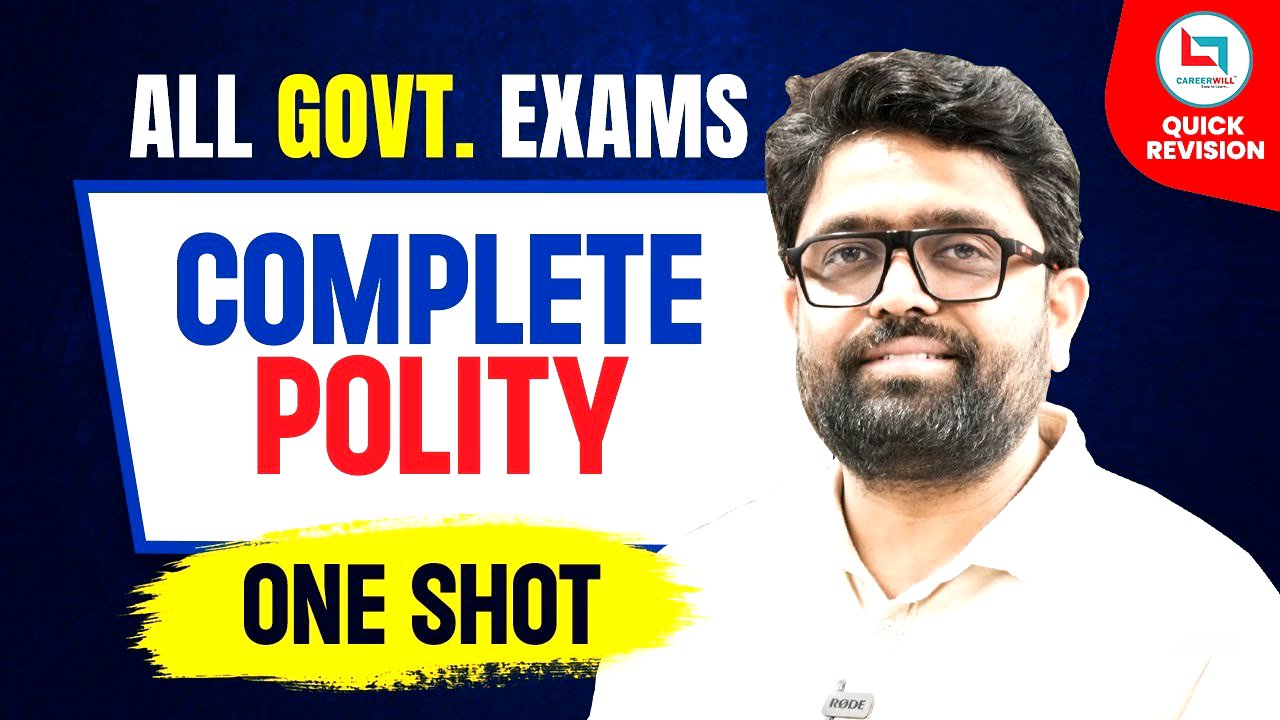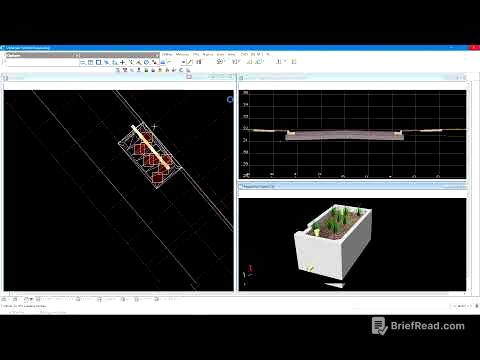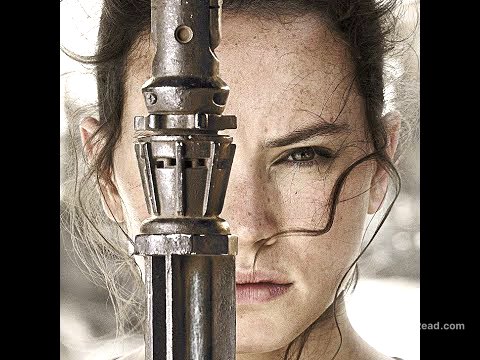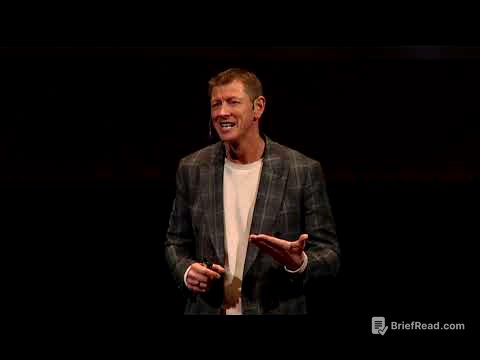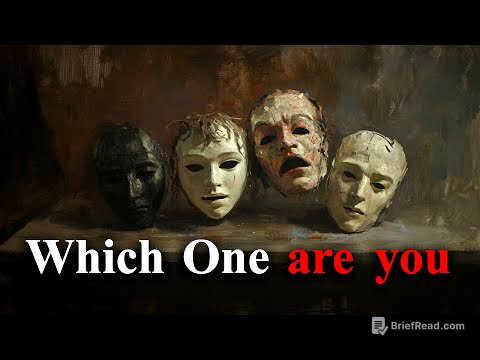TLDR;
This YouTube video provides a comprehensive quick revision of Indian Polity, focusing on the historical development of the Constitution, its key features, and various aspects of the Indian political system. It covers constitutional development under company and crown rule, the making of the Constitution, its preamble, schedules, fundamental rights, directive principles, and other important provisions.
- Constitutional development in two phases: Company Rule (1773-1857) and Crown Rule (1858-1947).
- Key acts: Regulating Act of 1773, Pitt's India Act, Charter Acts, and the Government of India Act of 1935.
- The Constitution's structure: Preamble, Schedules, Parts, and Articles.
- Fundamental Rights, Directive Principles, and Fundamental Duties.
- Key aspects of the Union and State governments, including the roles of the President, Governor, Prime Minister, and Chief Minister.
Introduction [0:02]
The video introduces a quick revision session on Indian Polity, designed to help viewers with their competitive exam preparation. The session aims to provide a concise overview of the subject, covering key concepts and sequences necessary for exam success.
Indian Polity: An Overview [1:04]
Indian Polity is defined as the system of ruling in India, primarily governed by the Constitution of India. The study of Indian Polity involves understanding the Constitution, its historical development, and its role in shaping the Indian political system. The initial focus is on the constitutional development of India, a crucial topic with a high likelihood of appearing in competitive exams.
Constitutional Development of India: Company Rule and Crown Rule [3:17]
The constitutional development of India occurred in two phases: Company Rule (1773-1857) and Crown Rule (1858-1947). The development began when the British arrived in India as traders, gradually strengthening their administration and eventually establishing colonial rule. Key events include the arrival of the British East India Company in 1600 AD, the establishment of factories, and significant battles such as Plassey (1757) and Buxar (1764). The British government started regulating the East India Company through acts like the Regulating Act of 1773.
Regulating Act of 1773 and Subsequent Acts [10:34]
The Regulating Act of 1773 marked the beginning of constitutional development in India. It led to the Governor of Bengal being redesignated as the Governor-General of Bengal, with Warren Hastings becoming the first Governor-General. The act also led to the establishment of the first Supreme Court in Calcutta in 1774. Subsequent acts included the Act of Settlement (1781) and Pitt's India Act (1784), which established the Board of Control in London to oversee the East India Company's affairs.
Charter Acts: 1793 to 1853 [14:21]
The Charter Act of 1793 extended the trading rights of the East India Company for 20 years and mandated that the salaries of the Board of Control members be paid from Indian revenue. The Charter Act of 1813 allowed Christian missionaries into India and allocated one lakh rupees annually for Indian education, while also abolishing the company's trade monopoly except for tea and trade with China. The Charter Act of 1833 made the Governor-General of Bengal the Governor-General of India, with Lord William Batting becoming the first. This act also abolished the company's remaining trade monopolies, extending its rule for another 20 years. The Charter Act of 1853 established the All India Legislative Council and introduced written exams for civil services.
Crown Rule: Government of India Act, 1858 [20:58]
The Government of India Act, 1858, passed after the 1857 revolt, marked the beginning of Crown Rule. It abolished the East India Company and transferred power to the British Crown. The Governor-General of India was replaced by the Viceroy, with Lord Canning becoming the first Viceroy. The Board of Control and Court of Directors were terminated, and their powers were transferred to the Secretary of State for India, who was advised by a 15-member Indian Council.
Indian Councils Act of 1861 and Subsequent Acts [24:17]
The Indian Councils Act of 1861 empowered the Viceroy to issue ordinances and introduced the portfolio system. The Indian Councils Act of 1892 allowed Indians to debate the budget for the first time. The Indian Councils Act of 1909, also known as the Morley-Minto Reforms, introduced separate electorates for Muslims. The Indian Councils Act of 1919, or the Montagu-Chelmsford Reforms, introduced dyarchy in the provinces and established a bicameral legislature.
Government of India Act, 1935 [31:44]
The Government of India Act, 1935, is considered a major source of the Indian Constitution. It abolished dyarchy in the provinces and introduced it at the center. The act divided powers between the center and the provinces through three lists: the Union List, the Provincial List, and the Concurrent List. It also led to the establishment of the Reserve Bank of India (RBI) in 1935 and the separation of Burma from India in 1937. A Federal Court was established in Delhi.
Constituent Assembly: Formation and Key Figures [35:14]
The demand for a Constituent Assembly was first made by M.N. Roy in 1934. The British initially rejected this demand but later accepted it. Provincial elections were held in 1937, and the Congress party formed governments in several provinces. Negotiations between the British and Indian leaders led to the August Offer of 1940 and the Cripps Mission of 1942, both of which were rejected. The Cabinet Mission Plan of 1946 led to the formation of the Constituent Assembly, with members like Stafford Cripps, A.V. Alexander, and Pathik Lawrence.
Indian Independence Act, 1947 and Making of the Constitution [45:18]
The Indian Independence Act of 1947 led to India's freedom on August 15, 1947. The Constituent Assembly met to draft the Constitution, forming a drafting committee headed by Dr. B.R. Ambedkar. After two years, 11 months, and 18 days, the Constitution was ready on November 26, 1949, and adopted, leading to the celebration of Constitution Day. The Constitution came into force on January 26, 1950, celebrated as Republic Day.
Foreign Sources of the Indian Constitution [49:39]
The Indian Constitution has borrowed provisions from various foreign constitutions. Key sources include:
- Britain: Single citizenship, parliamentary form of government, law-making process, and judicial writs.
- USA: Preamble, fundamental rights, judicial review, independent judiciary, post of vice president, elected president, and impeachment of the president.
- Ireland: Directive Principles of State Policy, election process of the president, and nomination of members to the Rajya Sabha.
- Canada: Quasi-federal system of government, post of governors, and a strong center.
- France: Idea of a republic state, liberty, equality, and fraternity.
- Russia: Fundamental duties, political, social, and economic justice.
- Australia: Language of the preamble, concurrent list, relations between the Union and States, and joint sessions called by the President.
- South Africa: Provision of constitutional amendment and election of members of Rajya Sabha.
- Germany: Emergency provisions and emergency powers of the president.
- Japan: Procedures established by law.
Preamble of the Constitution [55:56]
The Preamble of the Constitution outlines the objectives and principles of the Indian state. Key words include Sovereign, Socialist, Secular, Democratic, and Republic. The Preamble aims to secure justice, liberty, equality, and fraternity for all citizens. The terms Socialist, Secular, and Integrity were added to the Preamble by the 42nd Constitutional Amendment Act of 1976.
Schedules of the Constitution [1:01:38]
Schedules are tables in the Constitution that are not mentioned in the articles. The original Constitution had eight schedules, which have now increased to twelve. The schedules cover various aspects such as:
- First Schedule: Names of Indian States and Union Territories.
- Second Schedule: Salaries, allowances, and pensions of government officials.
- Third Schedule: Rules for taking oaths of various offices.
- Fourth Schedule: Allocation of Rajya Sabha seats from different states.
- Fifth Schedule: Administration and control of Scheduled Castes and tribal areas.
- Sixth Schedule: Special provisions for special administrative regions.
- Seventh Schedule: Subjects of the Union, State, and Concurrent Lists.
- Eighth Schedule: Languages of the Constitution.
- Ninth Schedule: Laws related to land reforms.
- Tenth Schedule: Provisions for the prohibition of defection.
- Eleventh Schedule: 29 subjects of Panchayats.
- Twelfth Schedule: 18 subjects of Municipalities.
Parts and Articles of the Constitution: Part 1 - The Union and Its Territories [1:10:05]
Part 1 of the Constitution deals with the Union and its territories, covering Articles 1 to 4. Article 1 states that India, that is Bharat, shall be a Union of States. Article 2 provides for the admission of new states into the Union, exemplified by the incorporation of Sikkim. Article 3 deals with the formation of new states and alteration of existing states' boundaries. Article 4 states that laws made under Articles 2 and 3 are not considered constitutional amendments under Article 368.
Parts and Articles of the Constitution: Part 2 - Citizenship [1:17:02]
Part 2 of the Constitution, covering Articles 5 to 11, deals with citizenship. Article 5 defines citizenship at the commencement of the Constitution. Article 6 provides for the citizenship of people who migrated from Pakistan to India. Article 7 addresses the citizenship of migrants to Pakistan. Article 8 covers the citizenship of Persons of Indian Origin (PIOs) living abroad. Article 9 deals with the termination of citizenship upon acquiring citizenship of another country. Article 11 grants Parliament the power to make or amend laws related to citizenship. The Citizenship Act of 1955 outlines five ways to obtain Indian citizenship and three ways to terminate it.
Parts and Articles of the Constitution: Part 3 - Fundamental Rights [1:27:15]
Part 3 of the Constitution, covering Articles 12 to 35, deals with Fundamental Rights. These rights are guaranteed and protected by the Constitution, and any violation can be directly challenged in the Supreme Court or High Court. Article 12 defines the term "State." Article 13 provides for the termination of laws inconsistent with Fundamental Rights. The Fundamental Rights are classified into six categories: Right to Equality, Right to Freedom, Right Against Exploitation, Right to Freedom of Religion, Cultural and Educational Rights, and Right to Constitutional Remedies.
Classification of Fundamental Rights: Right to Equality and Right to Freedom [1:31:15]
The Right to Equality (Articles 14-18) includes Equality Before Law, Prohibition of Discrimination, Equal Opportunity in Public Employment, Abolition of Untouchability, and Abolition of Titles. The Right to Freedom (Articles 19-22) includes Protection of Certain Rights Regarding Freedom of Speech, Protection in Respect of Conviction for Offences, Right to Life and Personal Liberty, and Protection Against Arrest and Detention.
Classification of Fundamental Rights: Right Against Exploitation, Right to Freedom of Religion, Cultural and Educational Rights, and Right to Constitutional Remedies [1:39:51]
The Right Against Exploitation (Articles 23-24) prohibits human trafficking and forced labor, as well as child labor. The Right to Freedom of Religion (Articles 25-28) guarantees freedom of conscience, the right to profess, practice, and propagate religion, and freedom from taxation for religious purposes. Cultural and Educational Rights (Articles 29-30) protect the interests of minorities and their right to establish and administer educational institutions. The Right to Constitutional Remedies (Article 32) guarantees the right to approach the Supreme Court for the enforcement of Fundamental Rights.
Parts and Articles of the Constitution: Part 4 - Directive Principles of State Policy [1:43:17]
Part 4 of the Constitution, covering Articles 36 to 51, deals with the Directive Principles of State Policy (DPSP). These principles, borrowed from the Irish Constitution, are guidelines for the State to ensure social and economic justice and to build a welfare state. The DPSP are classified into Socialist Principles, Gandhian Principles, and Western Liberal Principles.
Parts and Articles of the Constitution: Part 4A - Fundamental Duties [1:49:37]
Part 4A of the Constitution, containing Article 51A, deals with Fundamental Duties. These duties were added to the Constitution on the recommendation of the Sardar Swarn Singh Committee through the 42nd Constitutional Amendment Act of 1976. Initially, there were 10 Fundamental Duties, but the 86th Constitutional Amendment added an 11th duty related to providing education for children between 6 and 14 years.
Parts and Articles of the Constitution: Part 5 - The Union [1:53:27]
Part 5 of the Constitution, covering Articles 52 to 151, deals with the Union government. It is divided into three parts: the Union Executive, the Union Legislature, and the Union Judiciary. The Union Executive consists of the President, Vice President, Prime Minister, Council of Ministers, and Attorney General of India. The Union Legislature, or Parliament, consists of the President, Rajya Sabha, and Lok Sabha. The Union Judiciary is headed by the Supreme Court of India.
The Union Executive: President, Vice President, Prime Minister, and Attorney General [2:00:10]
The President is the head of the Union Executive, elected indirectly through an electoral college. The Vice President is the ex-officio Chairman of the Rajya Sabha. The Prime Minister is appointed by the President and heads the Council of Ministers. The Attorney General of India is the first law officer of the country and serves as the legal advisor to the government.
The Union Legislature: Parliament, Rajya Sabha, and Lok Sabha [2:13:46]
The Parliament consists of the President, Rajya Sabha, and Lok Sabha. The Rajya Sabha is the upper house, with a maximum of 250 members, serving six-year terms. The Lok Sabha is the lower house, with a maximum of 550 members, directly elected by the people for five-year terms.
The Union Judiciary: Supreme Court and Controller and Auditor General [2:19:15]
The Supreme Court, established under Articles 124 to 147, is the highest judicial body in India. It consists of a Chief Justice and other judges appointed by the President. The Controller and Auditor General (CAG) is the highest accounting officer, responsible for auditing the accounts of the Union and State governments.
Parts and Articles of the Constitution: Part 6 - The States [2:21:52]
Part 6 of the Constitution, covering Articles 152 to 237, deals with the State governments. It is divided into the State Executive, the State Legislature, and the State Judiciary. The State Executive consists of the Governor, Chief Minister, Council of Ministers, and Advocate General. The State Legislature consists of the Governor and the Legislative Assembly, with some states also having a Legislative Council. The State Judiciary is headed by the High Court.
The State Executive: Governor, Chief Minister, and Advocate General [2:29:19]
The Governor is the head of the State Executive, appointed by the President. The Chief Minister is appointed by the Governor and heads the Council of Ministers. The Advocate General is the first law officer of the state and serves as the legal advisor to the state government.
The State Legislature: Legislative Assembly and Legislative Council [2:36:18]
The State Legislature consists of the Governor and the Legislative Assembly. Some states also have a Legislative Council. The Legislative Assembly is the lower house, with a minimum of 60 and a maximum of 500 members. The Legislative Council is the upper house, with a minimum of 40 members.
The State Judiciary: High Court and Subordinate Courts [2:40:52]
The State Judiciary is headed by the High Court, with subordinate courts under its jurisdiction. The High Court consists of a Chief Justice and other judges appointed by the President.
Parts and Articles of the Constitution: Part 8 - The Union Territories [2:43:48]
Part 8 of the Constitution, covering Articles 239 to 241, deals with the Union Territories. There are currently eight Union Territories in India: Andaman and Nicobar Islands, Chandigarh, Dadra Nagar Haveli and Daman and Diu, Delhi, Jammu and Kashmir, Ladakh, Lakshadweep and Puducherry.
Parts and Articles of the Constitution: Part 9 - The Panchayats and Part 9A - The Municipalities [2:46:47]
Part 9 of the Constitution deals with Panchayats, covering Articles 243 to 243O. It was added by the 73rd Constitutional Amendment Act of 1992. Part 9A deals with Municipalities, covering Articles 243P to 243ZG. It was added by the 74th Constitutional Amendment Act of 1992.
Parts and Articles of the Constitution: Part 11 - Relations Between the Union and the States [2:51:33]
Part 11 of the Constitution deals with the relations between the Union and the States, covering legislative and administrative relations.
Parts and Articles of the Constitution: Part 14 - Services Under the Union and the States [2:54:43]
Part 14 of the Constitution deals with services under the Union and the States, covering Articles 308 to 323. It includes provisions for the Union Public Service Commission (UPSC) and State Public Service Commissions (SPSC).
Parts and Articles of the Constitution: Part 15 - Elections [2:56:21]
Part 15 of the Constitution deals with Elections, covering Articles 324 to 329. It includes provisions for adult suffrage.
Parts and Articles of the Constitution: Part 16 - Special Provisions Relating to Certain Classes [2:57:28]
Part 16 of the Constitution deals with special provisions relating to certain classes, covering Articles 330 to 342.
Parts and Articles of the Constitution: Part 17 - Official Language [2:58:27]
Part 17 of the Constitution deals with the Official Language, covering Articles 343 to 351.
Parts and Articles of the Constitution: Part 18 - Emergency Provisions [2:59:02]
Part 18 of the Constitution deals with Emergency Provisions, covering Articles 352 to 360. It includes provisions for National Emergency, President's Rule in a State, and Financial Emergency.
Parts and Articles of the Constitution: Part 20 - Amendment of the Constitution [3:01:27]
Part 20 of the Constitution deals with the Amendment of the Constitution, covering Article 368.
Conclusion [3:03:53]
The video concludes with encouragement for viewers to confidently approach their exams, equipped with a comprehensive understanding of Indian Polity.
